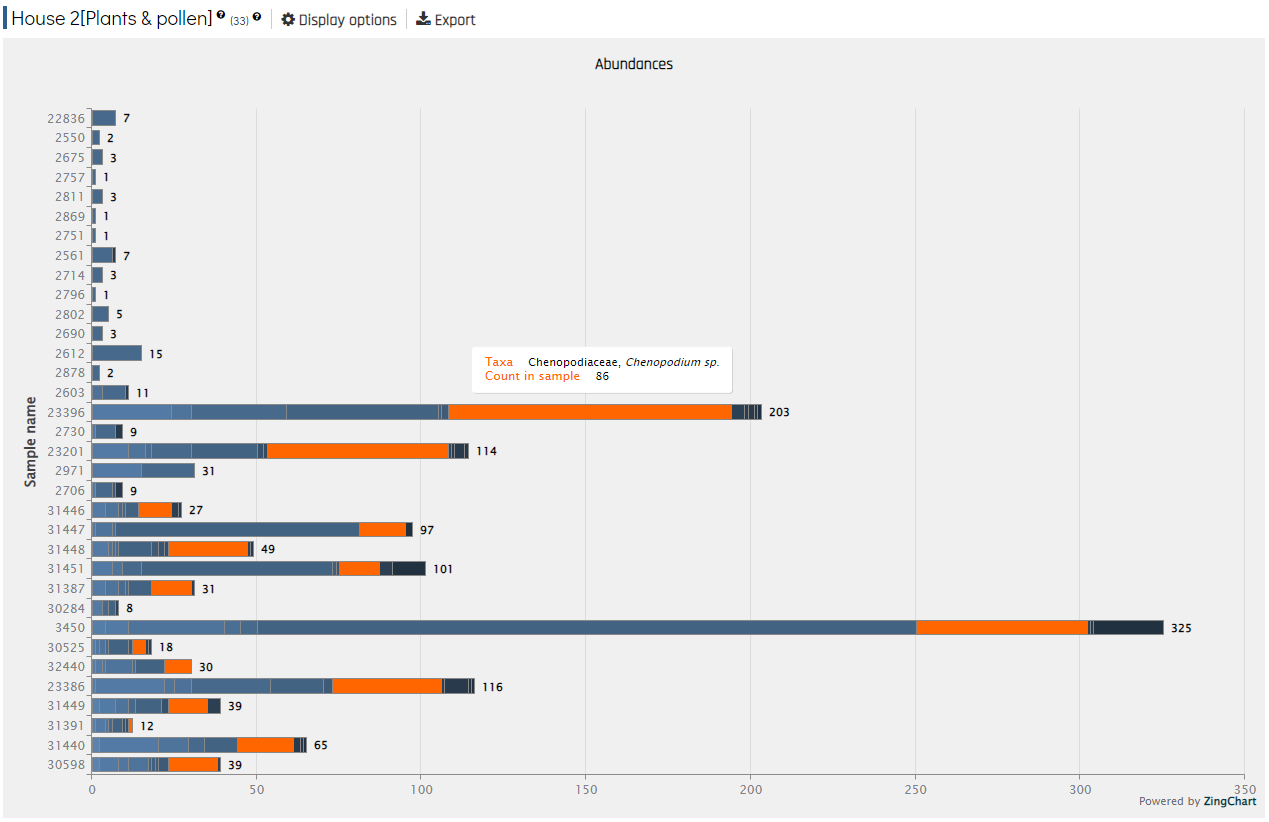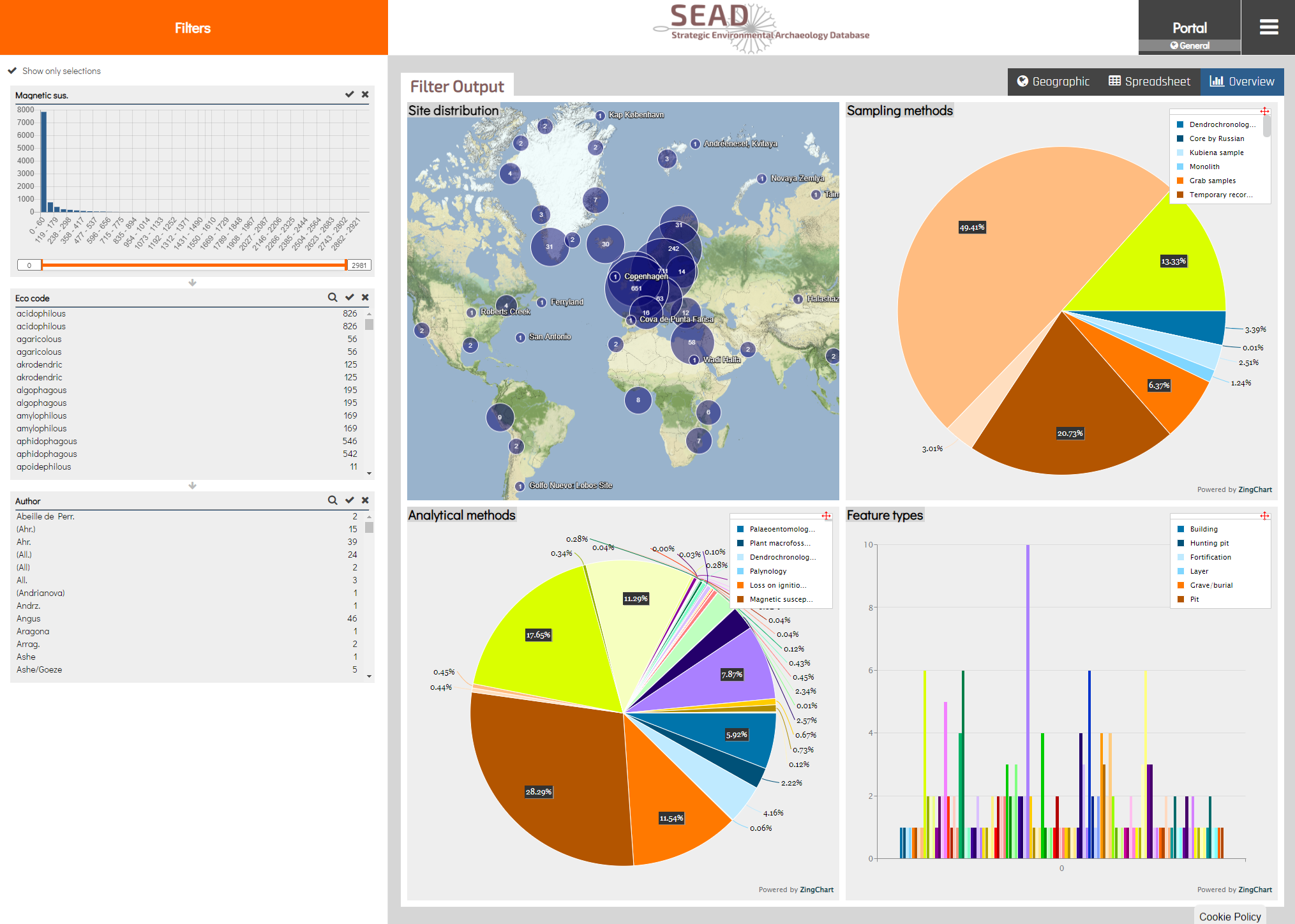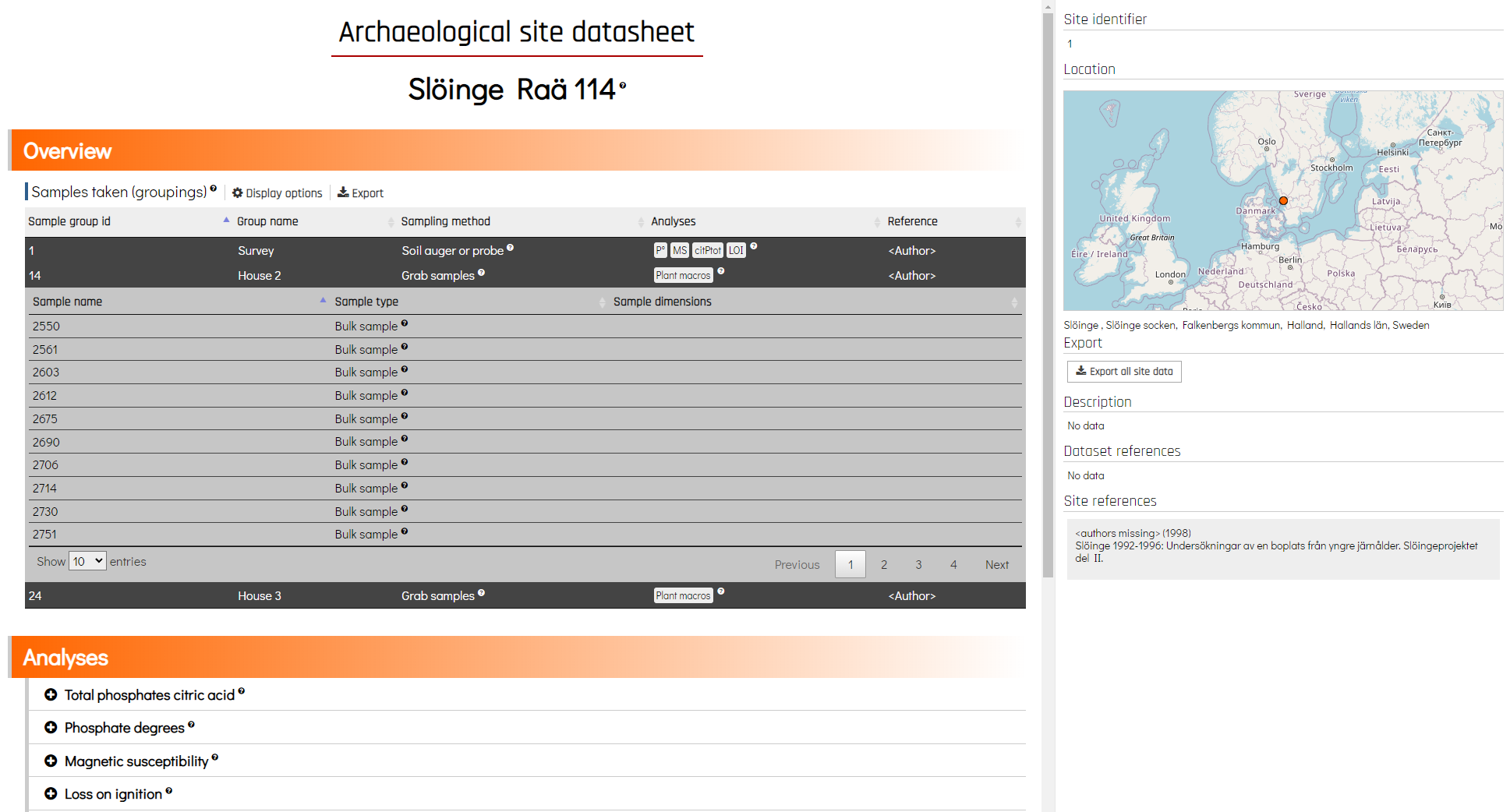SEAD, eller Strategic Environmental Archaeology Database, är en open access, internationellt orienterad och tvärvetenskaplig nationell forskningsdatainfrastruktur för lagring, hantering, spridning och analys av empiriska data om tidigare mänsklig aktivitet, biologisk mångfald och långsiktiga miljö- och klimatförändringar. Den utvecklas och hanteras av Miljöarkeologiska laboratoriet i samarbete med Humlab vid Umeå Universitet. SEAD är en del i den nationella infrastrukturen för digital arkeologi (SveDigArk).
SEAD, or the Strategic Environmental Archaeology Database, is a national research infrastructure for archaeology and an international standard database for environmental archaeology data. It is being developed and managed at the Environmental Archaeology Lab (MAL), in collaboration with Humlab at Umeå University, Sweden. SEAD is part of the Swedish National Infrastructure for Digital Archaeology (SweDigArch)
Read more about SEAD
Read more about SweDigArch
 Graph of species taxon distribution in an archeological sample
Graph of species taxon distribution in an archeological sampleIn cooperation with
 SEAD main interface
SEAD main interfaceThe SEAD relational database contains data essential to our understanding of past environmental and climatic changes, and the human relationship with these changes. The data in SEAD primarily takes the form of biological and chemical/physical proxy data, i.e. fossil frequencies and measured variables derived from soil samples taken from archaeological and natural deposits.
 SEAD site report
SEAD site report


